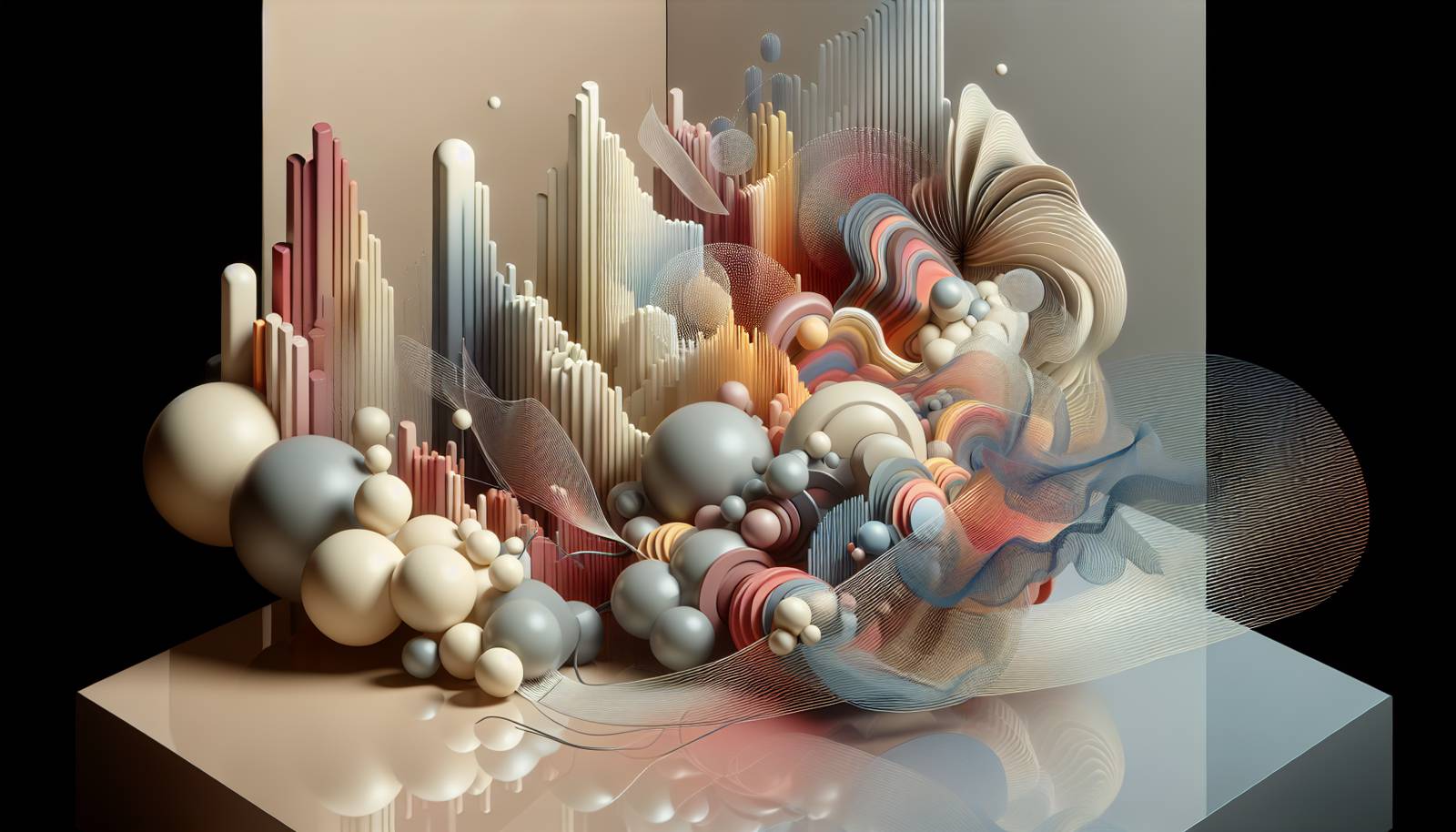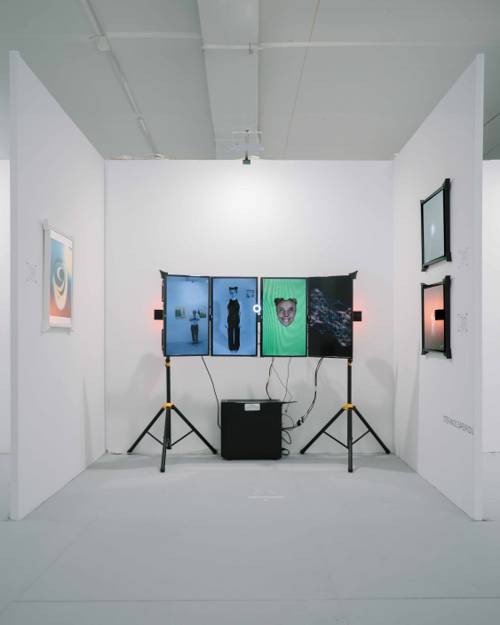
FAQ About The Impact of Audio-Visual Art Installations

What are audio-visual art installations?
Audio-visual art installations are immersive art experiences that combine visual components such as video, projection, or lighting with auditory elements like soundtracks, ambient noise, or music. These installations are designed to engage multiple senses and provide a multi-dimensional experience that transforms how art is traditionally perceived in exhibition spaces.

How do audio-visual installations enhance viewer experience?
Audio-visual installations enhance viewer experience by immersing the audience in a sensory environment that integrates sound and imagery. This multisensory approach allows viewers to engage with art on multiple levels, often invoking emotional responses and creating memorable experiences that are more impactful than traditional art displays.

What role do audio-visual art installations play in modern exhibitions?
In modern exhibitions, audio-visual art installations play a crucial role in making art interactive and engaging. They attract diverse audiences by providing alternative ways to experience art. These installations also challenge conventional boundaries and prompt viewers to rethink traditional art narratives by involving them in the storytelling process directly.

What are some famous examples of audio-visual art installations?
Famous examples of audio-visual art installations include Yayoi Kusama's "Infinity Mirrors," Rafael Lozano-Hemmer’s interactive light projects, and teamLab's digital museum "Borderless" in Tokyo. These installations are renowned for their innovative use of technology to create impactful, immersive experiences.

How do audio-visual installations differ from traditional art exhibits?
Unlike traditional art exhibits, which often focus on static visual elements such as paintings or sculptures, audio-visual installations use dynamic media such as video, sound, and interactive technology. This creates an immersive experience where the art can be experienced temporally and spatially, changing with viewer interaction or over time.

What technologies are commonly used in audio-visual installations?
Common technologies used in audio-visual installations include projectors, LED screens, spatial audio systems, sensors for interactive elements, and sometimes virtual or augmented reality gear. These technologies help create an enveloping environment that enhances both the visual and auditory aspects of the art piece.

Can audio-visual installations be considered a form of contemporary art?
Yes, audio-visual installations are a significant form of contemporary art. They reflect the fusion of art and technology, and they respond to modern cultural and technological contexts. These installations are often conceptually driven and focus on current social, environmental, or experiential themes.

What is the impact of audio-visual installations on traditional museums and galleries?
Audio-visual installations have transformed the traditional museum and gallery settings by introducing interactive and experiential art technologies. They have attracted new audiences, including younger demographics, and have encouraged museums and galleries to adapt by incorporating digital and interactive elements into their programming.

How do audio-visual installations interact with their environment?
Audio-visual installations often interact with their environment by using existing architectural elements as part of the installation. They may use walls, floors, ceilings, or entire rooms as canvases for projection and sound design, creating a cohesive experience that unites the physical space with the artwork.

What challenges do artists face in creating audio-visual installations?
Artists face several challenges when creating audio-visual installations, including the need for technical knowledge of complex equipment, the high cost of technology and software, and the difficulty of maintaining equipment over time. Additionally, ensuring an immersive experience that is both impactful and aligned with the artistic vision can be challenging.

How do viewers typically respond to audio-visual art installations?
Viewers typically respond positively to audio-visual art installations as they offer a novel, engaging experience. These installations often evoke strong emotional responses and can be quite memorable. The interactive nature typically encourages viewers to spend more time exploring and considering the art.

Do audio-visual installations require special spaces for display?
Audio-visual installations often require special spaces that can accommodate the technological needs, such as adequate lighting control, sound systems, and installation space. Venues typically prepared for such requirements include modern art museums, galleries with flexible layouts, and bespoke exhibition spaces.

How do artists conceptualize their audio-visual installations?
Artists usually begin by conceptualizing the theme or message they wish to convey and then consider how to use both visual and auditory elements to enhance this message. This process involves planning the narrative, the interaction between different media components, and ensuring the technical feasibility of the project.

Can audio-visual installations be mobile or transportable?
Yes, many audio-visual installations are designed to be mobile or transportable. This flexibility allows them to be showcased in various locations and contexts, such as art fairs, traveling exhibitions, or public events, thus reaching a broader audience.

What is the economic impact of audio-visual installations on art institutions?
Audio-visual installations can significantly impact art institutions economically by attracting larger and more diverse audiences, thus increasing ticket sales and venue visits. They can also enhance institutions' reputations as forward-thinking, innovative spaces, potentially increasing funding and sponsorship opportunities.

How do audio-visual installations influence the future of art?
Audio-visual installations are influencing the future of art by pushing the boundaries of artistic expression and challenging traditional media limitations. They encourage creativity and innovation, paving the way for new art forms that integrate technology and audience interactivity more deeply.

What skills are necessary for creating audio-visual installations?
Creating audio-visual installations requires a blend of artistic creativity and technical skills. Artists need knowledge in areas such as video production, sound design, programming, and interactive technology. Collaboration with technical experts is also often essential.

How do audio-visual installations relate to digital art?
Audio-visual installations are a subset of digital art, characterized by the use of technology to create immersive experiences. While digital art can be experienced online or through digital devices, audio-visual installations are often site-specific and engage physical space, offering a more immersive experience.

How are audio-visual installations curated in art exhibitions?
Curating audio-visual installations involves considering the conceptual coherence of the artworks with the exhibition theme, the technical requirements of each installation, and the spatial logistics of the exhibition area. Curators work closely with artists to ensure that the installations meet these requirements and that the overall exhibit provides a compelling narrative flow.

What future trends are anticipated in audio-visual art installations?
Future trends in audio-visual art installations include increasing use of AI and machine learning for interactive experiences, greater integration of virtual and augmented reality, and more environmentally sustainable practices. Artists are also exploring hybrid projects that combine multiple media forms and digital identities.
